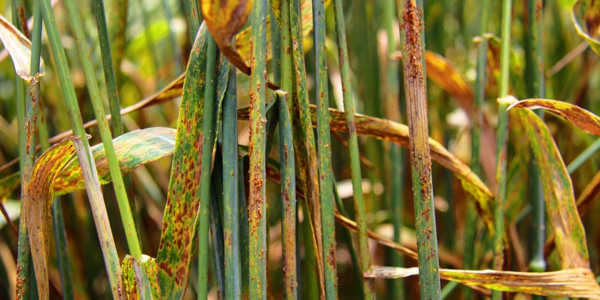Climate change is having a similar impact on the incidence and severity of disease in agricultural crops and wild plants in natural communities. In contrast to the structural and species simplicity of most agricultural crops, the complexity of natural ecosystems generates a complex array of interactions between wild plants and pathogens.
According to new research, climate change will increase the burden of crop diseases in some parts of the world while decreasing it in others. Crop diseases are expected to have a greater impact in tropical areas such as Brazil, Sub-Saharan Africa, India, and Southeast Asia as the planet warms. At higher latitudes (further from the equator), disease risk will grow — with Europe and China “particularly vulnerable.”
According to the University of Exeter study, which was published in Nature Climate Change, these changes will “closely track” variations in crop productivity expected as a result of global warming. According to models, rising temperatures will increase yields of most crops at high latitudes while decreasing or not increasing yields in the tropics.
The study also discovered that the mix of pathogens (diseases) affecting crops in the United States, Europe, and China is likely to change significantly. “Plant pathogens already cause devastating production losses globally,” said Professor Daniel Bebber of the Department of Biosciences and the Global Systems Institute at the University of Exeter.
Climate change will increase the burden of crop diseases in some parts of the world and reduce it in others, new research suggests.
“Previous research has shown that crop pests and pathogens are moving away from the equator, and this new study estimates pathogen risks over the next several decades. Our findings indicate that climate-driven yield increases in temperate regions will be offset by an increased crop protection burden. Pathogens are likely to reach all areas where conditions are favorable due to their rapid global dissemination via international trade and transportation.”
Plant pathogen infection rates are strongly influenced by environmental factors such as temperature. The study made use of previously collected data on the minimum, optimum, and maximum infection temperatures for 80 fungal and oomycete crop pathogens.
Understanding the various effects of climate change on agricultural and natural ecosystems necessitates accounting for the specific interactions between a pathogen and its host(s) and their subsequent effects on the host’s interactions with other species in the community. To understand the nature and extent of plant and pathogen evolutionary adaptation, as well as the fate of plants under future climate change, progress will require looking beyond short-term fluctuations to multiyear trends.

The authors used three crop models and four global climate models under the RCP6.0 climate pathway to compare current yields and future (2061-80) yield projections for 12 major crops. According to Professor Sarah Gurr, a co-author of the study, the changing pathogen mix in each area could have a significant impact.
“Plant breeding and agrochemical companies concentrate on specific diseases,” she explained. “In the United Kingdom, for example, wheat breeders are focusing on resistance to Septoria tritici blotch, yellow rust, and brown rust – but those threats may change.”
“Agriculture must plan for and prepare for the future – and that future is almost here,” said co-author Thomas Chaloner, a Ph.D. student supported by the South West Biosciences Doctoral Training Partnership (SWBio DTP).
“We only have a few decades, and crop breeding can take a long time, so we must consider resistance to pathogens that have not yet arrived. Many pathogens, particularly those found in tropical areas, are seriously understudied. We must invest in understanding these diseases, which may become more prevalent in the world’s key crop-growing regions.”
Climate change and plant-pathogen research have focused on agricultural cropping systems and, to a lesser extent, pathogens’ future role in semi-managed forestry production systems. There is a slow accumulation of examples in the forestry literature of diseases being detected much closer to the pole, usually further north, than was previously the case.
SWBio DTP, the Biotechnology and Biological Sciences Research Council (BBSRC), CIFAR, and Utrecht University all provided funding for the study. A lack of understanding of the adaptive patterns and mechanisms of plants, pathogens, and their interactions with climate change is a major impediment to predicting the likely response of both agricultural and wild plant communities to climate change.
















